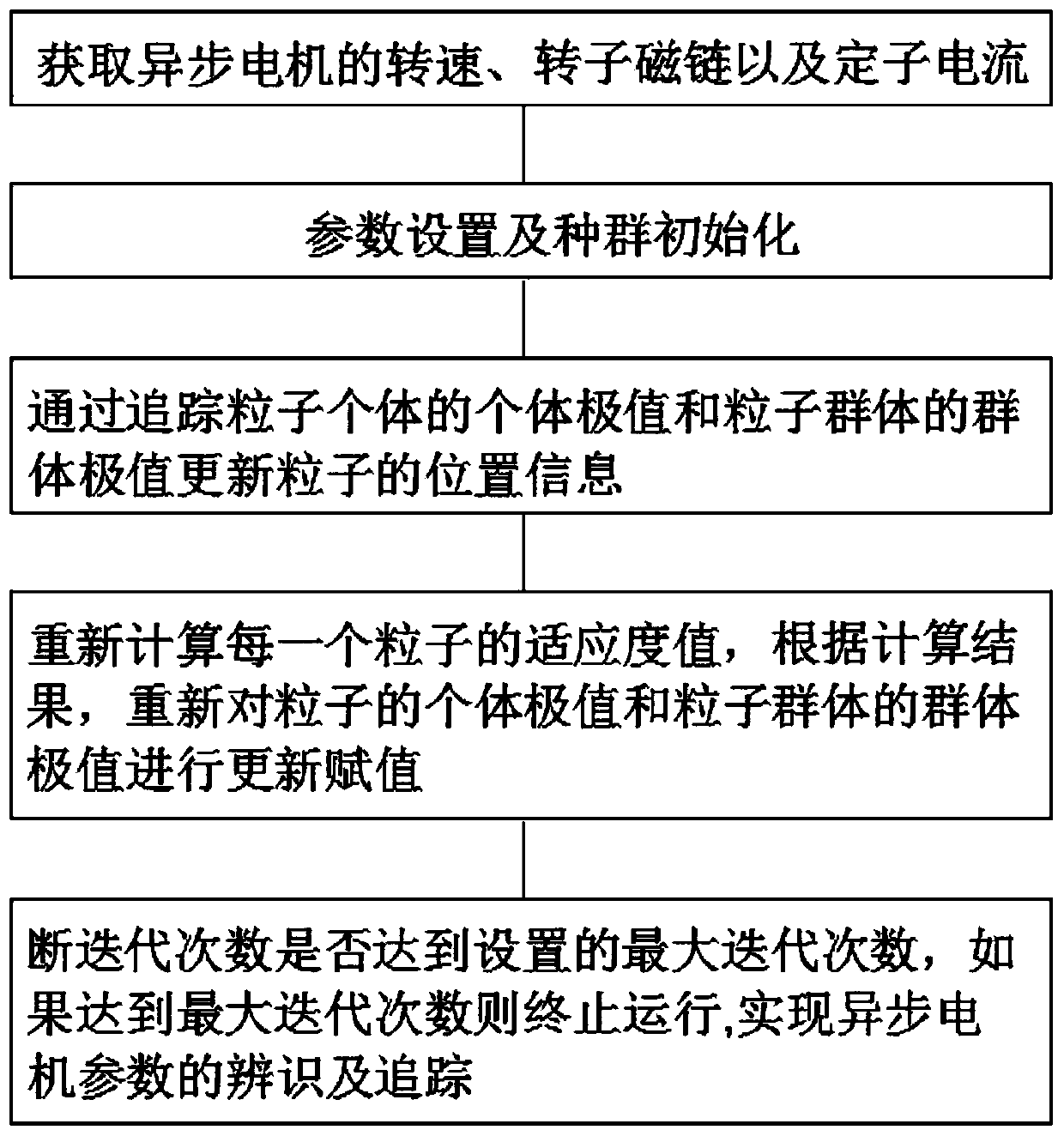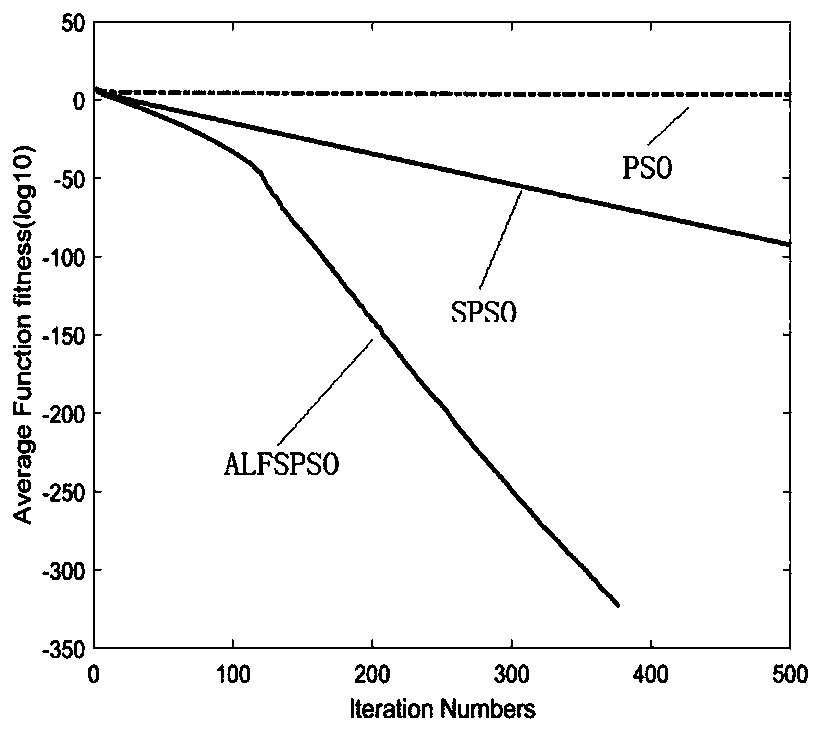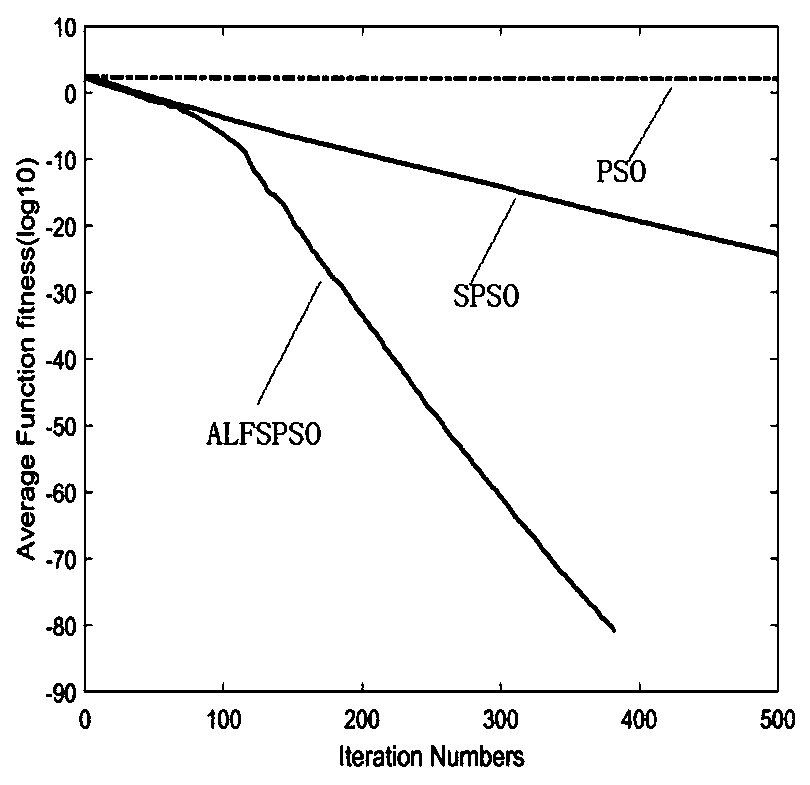Asynchronous motor parameter identification method based on improved particle swarm optimization algorithm
An improved particle swarm and particle swarm algorithm technology, applied in the field of motor parameter identification, can solve problems such as no specific solutions have been proposed, and achieve the effects of improving learning ability, accurate identification and tracking, increasing convergence speed and optimization accuracy
- Summary
- Abstract
- Description
- Claims
- Application Information
AI Technical Summary
Problems solved by technology
Method used
Image
Examples
Embodiment 1
[0028] Particle Swarm Optimization (PSO) is a swarm intelligence optimization algorithm proposed by scientists Kennedy and Eberhart to simulate the foraging behavior of birds. The PSO algorithm regards the bird flock as a particle group, and each individual particle has its own speed and position information. The PSO algorithm first initializes the particle swarm randomly, and then in each iteration, the particles update their speed and position information by continuously tracking the individual extremum and group extremum until they find their own optimal solution. The structure of the PSO algorithm is relatively simple, with few parameters and relatively strong search ability. It has been widely used in numerical calculation, machine learning, pattern recognition and other fields.
[0029] Although the search ability of the PSO algorithm is strong, there are still some defects. In the late iteration of the PSO algorithm, the convergence speed of the algorithm tends to slow...
Embodiment 2
[0042] A method for identifying parameters of an asynchronous motor based on an improved particle swarm algorithm, comprising the following steps:
[0043] Step 1, obtain the rotational speed, rotor flux linkage and stator current of the asynchronous motor;
[0044] Step 2, through the improved particle swarm optimization algorithm, obtain the rotor time constant and excitation inductance of the motor in real time;
[0045] Among them, in step 2, through the improved particle swarm optimization algorithm, the specific method to obtain the motor rotor time constant and excitation inductance in real time is as follows:
[0046] 2a, Randomly generate NP initial population x with dimension D within a given range of [xmax,xmin];
[0047] 2b, by tracking the individual extremum p of individual particles ij and the population extremum p of the particle population gj Update the position information of the particle;
[0048] 2c, recalculate the fitness value of each particle, and r...
Embodiment 3
[0057] A method for identifying parameters of an asynchronous motor based on an improved particle swarm algorithm, comprising the following steps:
[0058] Step 1, obtain the rotational speed, rotor flux linkage and stator current of the asynchronous motor;
[0059] Step 2, through the improved particle swarm optimization algorithm, obtain the rotor time constant and excitation inductance of the motor in real time;
[0060] Among them, in step 2, through the improved particle swarm optimization algorithm, the specific method to obtain the motor rotor time constant and excitation inductance in real time is as follows:
[0061] 2a, Randomly generate NP initial population x with dimension D within a given range of [xmax,xmin];
[0062] 2b, by tracking the individual extremum p of individual particles ij and the population extremum p of the particle population gj Update the position information of the particle;
[0063] 2c, recalculate the fitness value of each particle, and r...
PUM
 Login to View More
Login to View More Abstract
Description
Claims
Application Information
 Login to View More
Login to View More - R&D
- Intellectual Property
- Life Sciences
- Materials
- Tech Scout
- Unparalleled Data Quality
- Higher Quality Content
- 60% Fewer Hallucinations
Browse by: Latest US Patents, China's latest patents, Technical Efficacy Thesaurus, Application Domain, Technology Topic, Popular Technical Reports.
© 2025 PatSnap. All rights reserved.Legal|Privacy policy|Modern Slavery Act Transparency Statement|Sitemap|About US| Contact US: help@patsnap.com



